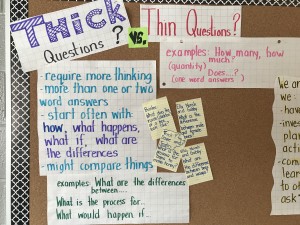Meeting with families was a little different this year due to job action. Last month, I met with a family to discuss their child’s progress. Although we weren’t meeting about concerns, this was a very insightful meeting, as we spoke about engaging students in reading for enjoyment. I was a little surprised because this child always raises their hand to participate in reading activities in the classroom and this definitely got me thinking about reading overall.
After some reflection, I realized that as an educator, I’m constantly asking students to read for a specific purpose: to gather or organize information for research; to check for comprehension; or to sometimes aid in writing. Sure, I’ve told students to read for enjoyment but I started to think about whether or not I’ve taught them how to find books that they enjoy. Have I given them time to just sit and read without asking them to do something after? How do we navigate the space of having students read for a purpose while also honouring them developing their own love of reading? How do we help them to maintain this balance as the demands of reading increase through the grades? This also got me thinking personally about my reading habits. When picking a book, I usually go for the trial and error method. I try a book, like it and find similar books by the same author or genre to continue reading. Or I hate it and stop reading anything similar. How do we help students to learn what is out there?
During the weeks before the break, while on trips to the library for our book exchange, I started to have more open conversations with my students about what I like to read and why. I spent some time pulling out different books that I liked and it was so neat to see students wanting to take a look at what I liked to read and who trusted my recommendations. This had me thinking about book reviews and how powerful they are. I’ve read books based solely on the word of someone I trusted. How might we foster spaces where students could freely share their reviews of books, not because they had to write a book report but because they wanted to have the opportunity to share. I also realized that my students need to see me reading – more specifically what I am reading – which opened up opportunities for conversations that are authentic. While in the library, I started reading some of the graphic novels and realized that many of them were so packed with amazing themes and could also be great for book clubs with students.
My three latest graphic novel reads are New Kid by Jerry Craft, Invisible Emmie by Terri Libenson, and Guts by Raina Telgemeir. While reading, I realized that each of the graphic novels could be used for deep conversations about the realities of navigating the very real difficulties of growing up. Conversations around race, fear, identity, and being valued could really be dug into by studying out these novels within the classroom setting. This got me thinking about this lovely section in our library that often gets so much use from students but not as much from the educators in our building. One question that popped into my head was, How might we use this section to engage all readers as they learn to identify what they enjoy reading?
Beyond these deep conversations, there’s a lot that could be learned from reading graphic novels. Similar to narratives, students can find the elements of a narrative within (characters, setting, plot, etc.). Beyond that here are a few ideas of how I think they might also be used.
Before reading:
- Copy a few pages of the text and remove the dialogue. Have students infer what is happening in a section of the graphic novel and justify their thinking.
- Copy different parts of the text and have students piece together the sequence of events based on what they see.
- Copy an integral part of the text. Remove the dialogue and have students write what they believe is happening in that section of the text. Ask them to think of what led up to that part and perhaps what happens next.
During Reading:
- Have students reflect on different features within the text. For example, how might the colours, shape, and style of the font and/or text bubbles influence your understanding of the text?
- Make predictions of what might come next. Have students draw the next few panels of the story.
- How does the imagery add to what is being “said” to the reader? Have students point out clear examples from the text.
- Ask students to consider the inner or outer dialogue happening. How do you know which is which? How might this give readers an even deeper insight into the experiences of the character?
- Panels in graphic organizers are oftentimes different sizes, why might that be? What can we gather about information within larger panels?
After Reading:
- Extend the story. What might happen in a sequel? Draw the beginning 3 panels of the next part of the story.
- Summarize the text in 5 panels. How might these 5 panels clearly show the plot within the graphic novel?
- How did the art in the text contribute to your understanding of the characters or the overall story? What role did the colours play in evoking emotion?
These are just some of my ideas for using graphic novels with students. Since many students have graphic novels at home, I wonder if this might be something that we can use going forward in this new realm of continuing the learning at home as we perhaps use this time to help students identify what they enjoy reading. Let me know your thoughts.






